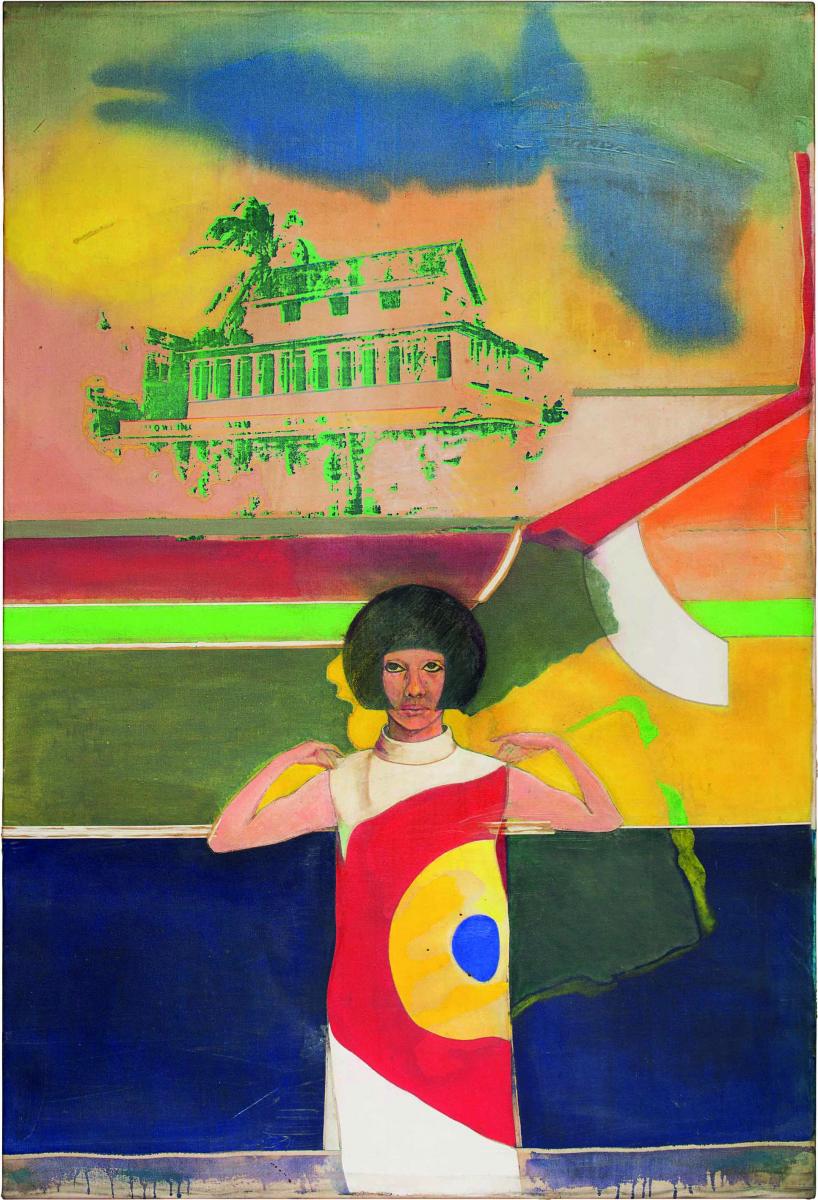This wonderful Cornish workshop and museum is dedicated to the legacy of studio pottery trailblazer Bernard Leach
Frank Bowling: Breaking Boundaries
Frank Bowling: Breaking Boundaries
18 Jun 2019
Frank Bowling is an artist who refuses to be pigeonholed. As the first major retrospective of his art opens, we look at one of his earliest works.
 Frank Bowling, Cover Girl, 1966. Private Collection © Frank Bowling. All Rights Reserved, DACS 2019
Frank Bowling, Cover Girl, 1966. Private Collection © Frank Bowling. All Rights Reserved, DACS 2019
Over Frank Bowling’s six-decade career his kaleidoscopic paintings have influenced generations of artists. Now 85 – and still painting – he was born in Guyana (then British Guiana) in 1934. Part of the Windrush generation, he moved to London at age 19, and studied at the Royal College of Art. Known for his bold use of colour and experimental style, Bowling’s art explores themes including autobiography and postcolonial geopolitics. His work spans ‘map paintings’ – created with stencils and spray paint to render a map outline – and ‘poured paintings’, made by tipping paint down a raised surface.
One of Bowling’s most celebrated pieces is this multilayered 1966 work, Cover Girl. It is a juxtaposition of styles, mediums and ideas. Dominating the work is the figure of Japanese model Hiroko Matsumoto. Bowling had been inspired by a photograph of her that year, in a Pierre Cardin dress, on the front of Observer magazine. ‘That time,’ says curator Elena Crippa, ‘witnessed a visual awakening. It was the post-war period. There was a sense of wanting to embrace an exciting world of colour.’
 Frank Bowling portrait: © Alastair Levy
Frank Bowling portrait: © Alastair Levy
The image of Bowling’s Variety Store – the artist’s mother’s house and shop – references his childhood in New Amsterdam, Guyana. ‘His mother, an entrepreneur and dressmaker, was an important influence,’ Crippa explains. Unlike the rest of the painting, which is oil on canvas, the house is a silkscreened ink image of a photograph sent to him by his mother in 1953. In its reinvention of techniques associated with Pop Art and Abstract Expressionism, Cover Girl is a powerful example of Bowling’s pioneering style.
‘He is measuring himself with important Abstract Impressionist painters of the time, and is pushing what they are doing to a new extreme,’ says Crippa. ‘For example, he repurposes the trademark stripes of Barnett Newman, and Helen Frankenthaler’s paint washes – shown at the top of the canvas. Cover Girl’s multifaceted nature makes it captivating. Bowling creates tension and complexity, emphasising his past and present, with the images of the girl and the house. When I look at the girl, I feel she carries not only the weight of history, but these different approaches to painting on her shoulders.’
SEE
Frank Bowling at Tate Britain, until 26 August
About the Author
The Arts Society
JOIN OUR MAILING LIST
Become an instant expert!
Find out more about the arts by becoming a Supporter of The Arts Society.
For just £20 a year you will receive invitations to exclusive member events and courses, special offers and concessions, our regular newsletter and our beautiful arts magazine, full of news, views, events and artist profiles.
FIND YOUR NEAREST SOCIETY
MORE FEATURES
Ever wanted to write a crime novel? As Britain’s annual crime writing festival opens, we uncover some top leads
It’s just 10 days until the Summer Olympic Games open in Paris. To mark the moment, Simon Inglis reveals how art and design play a key part in this, the world’s most spectacular multi-sport competition



